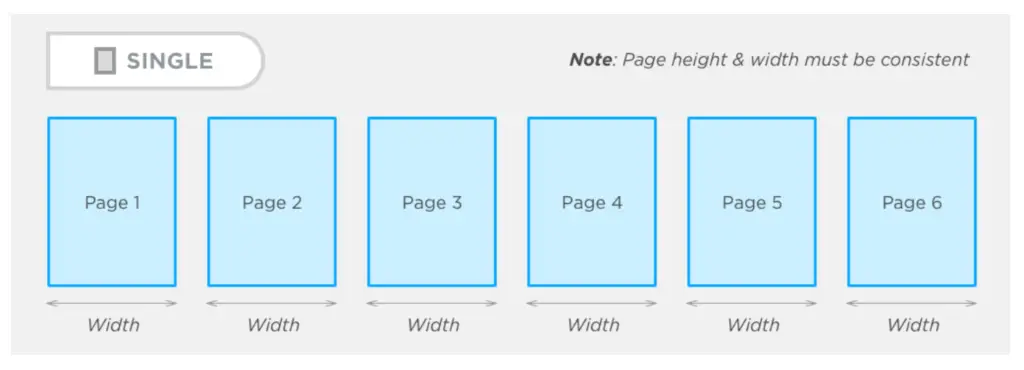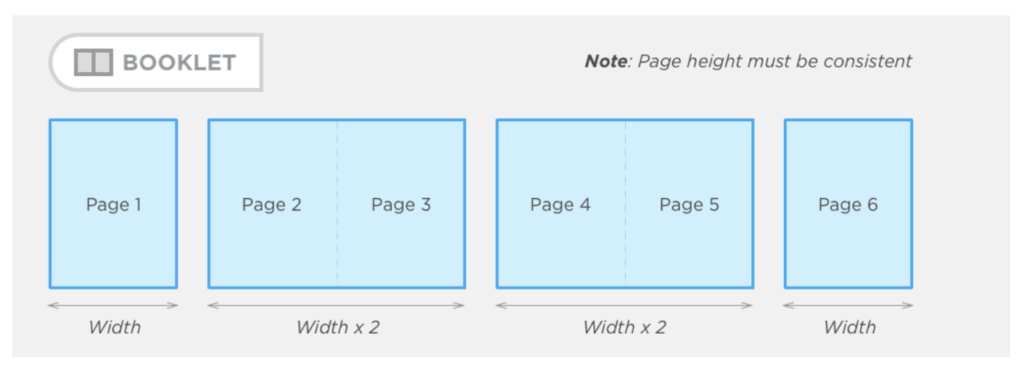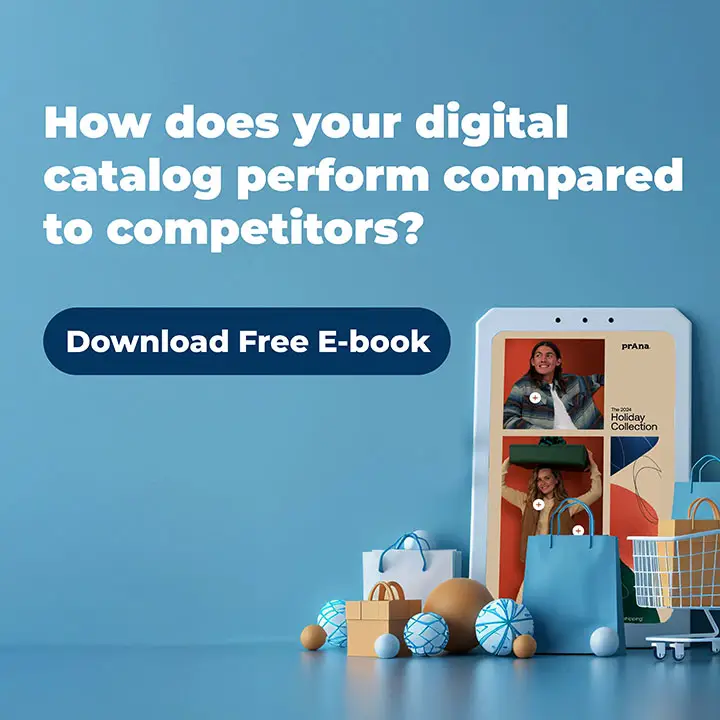If you’ve ever flipped through a glossy online magazine, browsed a seasonal retail catalog, or opened a company brochure on your phone, you’ve already experienced how much the digital publication format shapes the reading experience. For anyone creating a digital publication, whether you work in retail, publishing, education, or corporate communications, choosing the right digital publication format isn’t just a design choice. It affects how your audience engages with your content, how easy it is to read, and whether they stick around. The big question is simple: should readers view it one page at a time or as a two-page spread, like a printed magazine?
Both single-page and booklet (spread) formats have their place, but deciding which one is best depends on your end goal and the desired consumer journey. A double-page spread might work better for higher-volume products such as supermarkets, but a furniture brand might want to use a single-page, landscape format to showcase its products better in the home environment. Understanding which digital publication format suits your content will help you create a better reading experience and avoid layout or formatting issues later.
What is a Single Page Digital Publication Format?
A single-page digital publication format shows one page at a time, allowing that page to fill more of the reader’s screen. This makes it easier to focus on the content and works particularly well on mobile devices. A good example of a landscape single-page format use is a company that might want to use its digital catalogs as a tool for sales consultants to showcase the latest product line during in-person meetings.
Best for:
- Landscape-oriented publications
- Short documents, such as one or two pages
- Designs that are meant to be viewed one page at a time
Formatting tips:
- Keep page width and height consistent to avoid stretching or distortion
- If your PDF contains pre-formatted spreads, they will automatically be split into single pages, so design accordingly

What is a Booklet (Spread) Digital Publication Format?
A booklet digital publication format uses double-width pages, showing two pages side-by-side, much like a printed magazine or catalog. It offers a familiar reading experience, where spreads can be used for creative layouts or large visuals. As mentioned earlier in the article, this format is also best for higher product volumes; a supermarket or jewelry line might want to fit more products in one view, which works well for desktop devices.
Best for:
- Magazine or catalog-style publications
- Portrait-oriented documents
- Designs that rely on content flowing across two pages
Formatting tips:
- Keep page height and width consistent throughout
- For pre-formatted spreads, make sure the page width is exactly double the width of a single page
- If you upload single pages, most platforms will automatically join them into spreads

Comparing Digital Publication Formats: Single Page vs Booklet
| Feature | Single Page Digital Publication Format | Booklet Digital Publication Format |
|---|---|---|
| Reading Style | One page at a time | Two pages side-by-side like a magazine |
| Best For | Landscape layouts, short documents, focused reading | Magazines, catalogs, portrait layouts |
| User Experience | Maximizes screen space for a single page | Familiar flip-through experience |
| Design Approach | Each page stands alone | Content can flow across a two-page spread |
| File Handling | Pre-formatted spreads are split into single pages | Single pages are automatically joined into spreads |
See Each Digital Publication Format in Action
Example of a Single-Page Digital Publication Format
Here’s how a single-page layout appears in practice. Each page fills most of the screen, which makes it easy to read without zooming in. This style is a good fit for short, landscape-oriented publications where you want the reader’s attention on one page at a time. It is also perfectly designed for optimised mobile vertical scroll.
Why a Single Page Works for High Fashion
The High Fashion furniture publication uses a single-page format to let each design take center stage. With one striking image per screen, the reader stays fully on the featured piece, free from distractions. This clean, gallery-like presentation suits high-end furniture where visual impact and detail matter most, and it adapts beautifully to mobile viewing by making the most of the available screen space.
Example of a Booklet Digital Publication Format
In a booklet layout, two pages sit side-by-side, giving a similar feel to reading a printed magazine or catalog. This format shines when your design uses spreads or when you want to give readers a more immersive flip-through experience.
Why a Double Page Spread Works for Brighton
The Brighton jewellery publication uses a double-page spread to give each collection room to breathe while still showing how the pieces work together. The side-by-side pages create a natural flow for storytelling and styling, allowing close-up product shots to sit alongside lifestyle imagery. This layout mirrors the feel of a luxury print catalog, making it easy for shoppers to browse, compare, and be inspired without losing the sense of a curated brand experience.
How to Choose the Right Digital Publication Format
Your choice comes down to your content and how you want your audience to experience it.
Choose single-page if:
- Your design is simple and does not rely on spreads
- The document is landscape-oriented or short
- You want each page to take up the full reading space for easy viewing
Choose booklet if:
- You are publishing a magazine, catalog, or similar publication
- The document is portrait-oriented
- Your layout is designed for spreads with content or visuals spanning two pages
Making Your Choice
There is no one-size-fits-all answer. The best digital publication format complements your design and gives readers the most enjoyable experience.
If you are unsure which format works best, preview your publication in both formats before publishing. This quick test will help you see how the layout flows, whether text and images are clear, and which format feels right for your audience.


